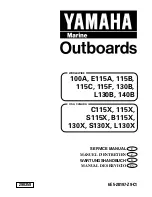
Appendix B: Post Codes
________________________________________________________________
________________________________________________________________
45
APPENDIX B: POST CODES
F
EISA POST codes are typically output to port address 300h. ISA POST
codes are typically output to port address 80h.
POST
Name
Description
C0
Turn Off Chipset
Cache
OEM Specific-Cache control.
1
Processor Test 1
Processor Status (1 FLAGS) Verification.
Test the following processor status flags
carry, zero, sign, overflow,
The BIOS will set each of these flags, verify they are set, then
turn each flag off and verify it is off.
2
Processor Test 2
Read/Write/Verify all CPU registers except SS, SP, and BP with
data pattern FF and 00.
3
Initialize Chips
Disable NMI, PIE, AIE, UEI, SQWV.
Disable video, parity checking, DMA.
Reset math coprocessor.
Clear all page registers, CMOS shutdown byte.
Initialize timer 0, 1, and 2, including set EISA timer to a known
state.
Initialize DMA controllers 0 and 1.
Initialize interrupt controllers 0 and 1.
Initialize EISA extended registers.
4
Test Memory Refresh
Toggle
RAM must be periodically refreshed in order to keep the
memory from decaying. This function assures that the memory
refresh function is working properly.
5
Blank video, Initialize
keyboard
Keyboard controller initialization.
6
Reserved
7
Test CMOS Interface
and Battery Status
Verifies CMOS is working correctly, detects bad battery.
BE
Chipset Default
Initialization
Program chipset registers with power on BIOS defaults.
C1
Memory presence test
OEM Specific-Test to size on-board memory.
C5
Early Shadow
OEM Specific-Early Shadow enable for fast boot.
C6
Cache presence test
External cache size detection.
8
Setup low memory
Early chip set initialization.
Memory presence test.
OEM chip set routines.
Clear low 64 K of memory.
Test first 64 K memory.
9
Early Cache
Initialization
Cyrix CPU initialization.
Cache initialization.
A
Setup Interrupt Vector
Table
Initialize first 120 interrupt vectors with SPURIOUS_INT-HDLR
and initialize INT 00h-1Fh according to INT_TBL.
B
Test CMOS RAM
Checksum
Test CMOS RAM Checksum, if bad, or insert key pressed, load
defaults.
C
Initialize keyboard
Detect type of keyboard controller (optional).
Set NUM_LOCK status.
D
Initialize Video
Interface
Detect CPU clock.
Read CMOS location 14h to find out type of video in use.
Detect and Initialize Video Adapter.
E
Test Video Memory
Test video memory, write sign-on message to screen.





































